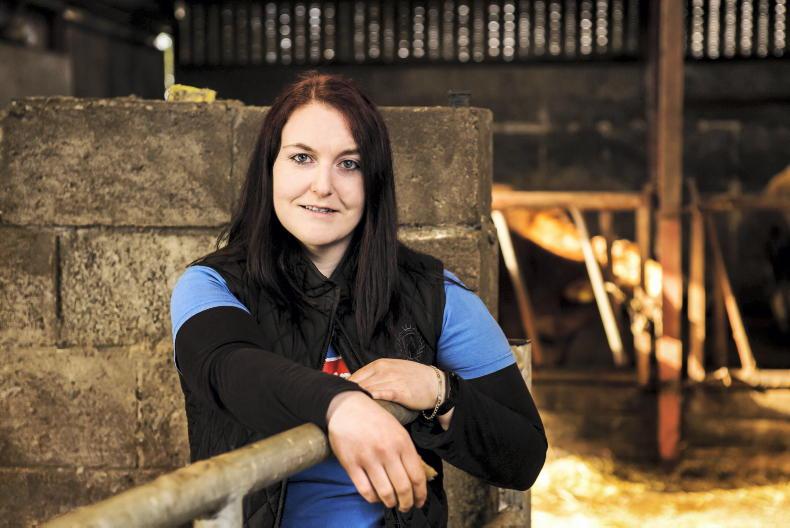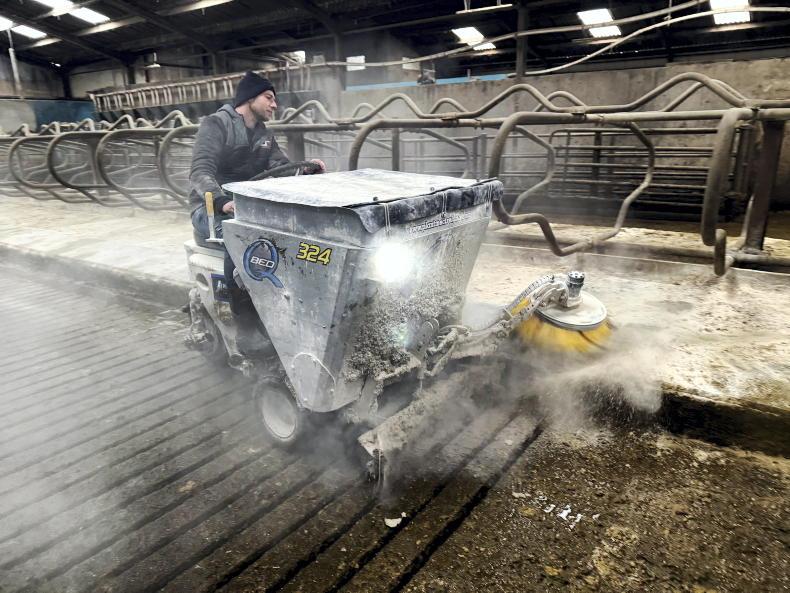The Irish Farmers Journal can exclusively reveal that a total of 468 ‘full’ RSA tractor tests have been carried out since testing first began in June 2018. The pass rate improved year on year, with the exception of 2023.
Last year, the pass rate peaked at 63%, which is positive. Over the test’s seven-year existence, its average pass rate has risen to over 54%. The legislation requiring fast tractors to undergo a roadworthiness test, similar to that of an NCT for cars, was introduced in May 2018.
Brands
A total of 17 different brands of tractors have been tested to date. As we would expect, JCB is the most popular brand tested. Its high-speed Fastrac tractors account for 27% of all units tested to date. John Deere is the second most popular brand tested, accounting for 18.2%. New Holland accounted for a further 16.2% of all tests to date.
This means that the three brands combined have accounted for almost 62% of all tests carried out to date. The next in line were Fendt (7.8%), Case IH (6.9%) and Massey Ferguson (6%). As per the table, ‘Man’ obviously refers to a lorry, which is an anomaly is the system.
What tractors need to be tested?
The Road Safety Authority (RSA) states that the requirement of a fast tractor (design speed exceeding 40km/h) to be tested is based on its use. Any fast tractor which is used for a non-exempted activity (non-agricultural work) requires a certificate of roadworthiness (CRW).
Such examples of tractors required to be tested include: those involved in local authority work, the construction, quarrying, manufacturing or mining industries or road construction/roadworks. ‘Fast’ tractors will not have to be tested if they are being used for the purposes of agricultural, horticultural, forestry, farming or fishery activity, on the land where such activity takes place.
Eligible tractors are required to display a CRW on the vehicle’s windscreen. The tractor test mirrors the CVRT (Commercial Vehicle Roadworthiness Testing) currently carried out on heavy commercial vehicles (HCVs), but has been modified to suit tractors.
Eligible tractors are required to be tested after they have reached their fourth birthday, and every second year after that. As with any CVRT, DOE or NCT vehicle test, the reading on the hour meter is recorded at the time of the test.
The law states that if a tractor is deemed to have failed dangerously, it cannot be driven out of the test centre. Similar to other vehicle tests, if the initial test is failed the retest must be carried out within 21 days.
The agricultural trailers used behind these tractors, which are not commercial trailers, do not require a test. However, the RSA has said that under road traffic law, a trailer must be roadworthy at all times if you use it on a public road.
What is the penalty for using a vehicle without a valid CRW?
The RSA has said that if you use a vehicle without a valid CRW, it may result in a court appearance whereby on conviction a fine not exceeding €5,000 or imprisonment for a term not exceeding three months, or both, may be imposed. Five penalty points would also apply on conviction.
Where are the tractors tested?
There are currently 41 RSA-approved test centres, which is actually down from 43 last year. These 41 are scattered across 21 counties throughout the country. All of these centres are also heavy commercial vehicle (HCV) testing centres. To date, testing has now taken place across all 21 counties.
Kerry continues to lead the way in terms of the number of tests carried out to date, accounting for 14.5% (68) of all tests. This is followed by Offaly and Mayo who are joint second at 10.3% (48 each), followed by Cork at 8.5% (40 tests). The top four counties combined accounted for almost 44% of all tests.

JCB is the most popular brand tested and accounts for 27% of all units tested to date.
What are tractors failing on?
The test is broken down into seven stages – starting with braking equipment, then steering, onto visibility, lamps, reflectors and electrical equipment, axles, wheels, tyres and suspension, the chassis, cab and bodywork, safety restraints, locks, horn, speedometer and finally emissions/noise.
Over the past seven years of testing, steering linkage condition and speed discs have come out in the top five reasons of failure each year. Meanwhile, lights condition and operation, mechanical coupling and towing device and the transmission have also been amongst the most common failure items year on year.
How much does it cost?
In 2024, the RSA increased the price of carrying out the roadworthiness test. In 2023, the cost for testing a fast tractor having a DGVW exceeding 3,500kg but not exceeding 7,500kg was €146.52 plus VAT, with the retest costing €47.26 plus VAT.
For the larger fast tractor category having a DGVW exceeding 7,500kg, the cost was €171.16 plus, and the retest was €59.08 plus VAT. The test cost has been increased by 11.5% and the retest fee by 13%.
The Irish Farmers Journal can exclusively reveal that a total of 468 ‘full’ RSA tractor tests have been carried out since testing first began in June 2018. The pass rate improved year on year, with the exception of 2023.
Last year, the pass rate peaked at 63%, which is positive. Over the test’s seven-year existence, its average pass rate has risen to over 54%. The legislation requiring fast tractors to undergo a roadworthiness test, similar to that of an NCT for cars, was introduced in May 2018.
Brands
A total of 17 different brands of tractors have been tested to date. As we would expect, JCB is the most popular brand tested. Its high-speed Fastrac tractors account for 27% of all units tested to date. John Deere is the second most popular brand tested, accounting for 18.2%. New Holland accounted for a further 16.2% of all tests to date.
This means that the three brands combined have accounted for almost 62% of all tests carried out to date. The next in line were Fendt (7.8%), Case IH (6.9%) and Massey Ferguson (6%). As per the table, ‘Man’ obviously refers to a lorry, which is an anomaly is the system.
What tractors need to be tested?
The Road Safety Authority (RSA) states that the requirement of a fast tractor (design speed exceeding 40km/h) to be tested is based on its use. Any fast tractor which is used for a non-exempted activity (non-agricultural work) requires a certificate of roadworthiness (CRW).
Such examples of tractors required to be tested include: those involved in local authority work, the construction, quarrying, manufacturing or mining industries or road construction/roadworks. ‘Fast’ tractors will not have to be tested if they are being used for the purposes of agricultural, horticultural, forestry, farming or fishery activity, on the land where such activity takes place.
Eligible tractors are required to display a CRW on the vehicle’s windscreen. The tractor test mirrors the CVRT (Commercial Vehicle Roadworthiness Testing) currently carried out on heavy commercial vehicles (HCVs), but has been modified to suit tractors.
Eligible tractors are required to be tested after they have reached their fourth birthday, and every second year after that. As with any CVRT, DOE or NCT vehicle test, the reading on the hour meter is recorded at the time of the test.
The law states that if a tractor is deemed to have failed dangerously, it cannot be driven out of the test centre. Similar to other vehicle tests, if the initial test is failed the retest must be carried out within 21 days.
The agricultural trailers used behind these tractors, which are not commercial trailers, do not require a test. However, the RSA has said that under road traffic law, a trailer must be roadworthy at all times if you use it on a public road.
What is the penalty for using a vehicle without a valid CRW?
The RSA has said that if you use a vehicle without a valid CRW, it may result in a court appearance whereby on conviction a fine not exceeding €5,000 or imprisonment for a term not exceeding three months, or both, may be imposed. Five penalty points would also apply on conviction.
Where are the tractors tested?
There are currently 41 RSA-approved test centres, which is actually down from 43 last year. These 41 are scattered across 21 counties throughout the country. All of these centres are also heavy commercial vehicle (HCV) testing centres. To date, testing has now taken place across all 21 counties.
Kerry continues to lead the way in terms of the number of tests carried out to date, accounting for 14.5% (68) of all tests. This is followed by Offaly and Mayo who are joint second at 10.3% (48 each), followed by Cork at 8.5% (40 tests). The top four counties combined accounted for almost 44% of all tests.

JCB is the most popular brand tested and accounts for 27% of all units tested to date.
What are tractors failing on?
The test is broken down into seven stages – starting with braking equipment, then steering, onto visibility, lamps, reflectors and electrical equipment, axles, wheels, tyres and suspension, the chassis, cab and bodywork, safety restraints, locks, horn, speedometer and finally emissions/noise.
Over the past seven years of testing, steering linkage condition and speed discs have come out in the top five reasons of failure each year. Meanwhile, lights condition and operation, mechanical coupling and towing device and the transmission have also been amongst the most common failure items year on year.
How much does it cost?
In 2024, the RSA increased the price of carrying out the roadworthiness test. In 2023, the cost for testing a fast tractor having a DGVW exceeding 3,500kg but not exceeding 7,500kg was €146.52 plus VAT, with the retest costing €47.26 plus VAT.
For the larger fast tractor category having a DGVW exceeding 7,500kg, the cost was €171.16 plus, and the retest was €59.08 plus VAT. The test cost has been increased by 11.5% and the retest fee by 13%.











SHARING OPTIONS